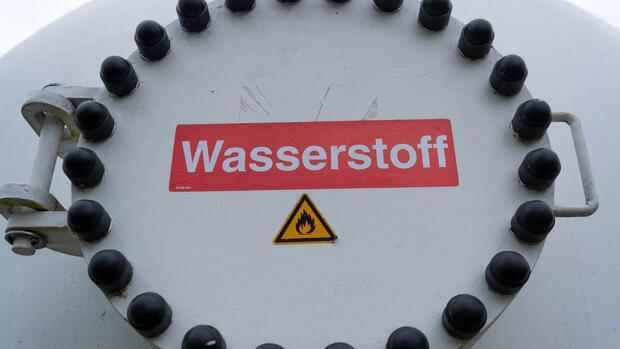Dusseldorf Because hydrogen from renewable energies was more than twice as expensive as hydrogen from fossil natural gas, experts only expected a breakthrough for the future technology in five to ten years. Since the price of gas has risen to a new record level, however, sustainable hydrogen is now paying off much faster than expected – and could thus significantly accelerate the ramp-up of the hydrogen economy.
“The change is already here. Wherever the production of green electricity is cheap, for example with hydropower in Scandinavia or with a lot of wind and sun in Namibia, Power-to-X products such as green ammonia are already cheaper than the fossil alternative,” explains hydrogen expert Michael Sterner from the Technical University of Regensburg.
Analysts from Bloomberg New Energy Finance (BNEF) even go one step further: according to the latest calculations by the experts, green hydrogen is already cheaper than fossil hydrogen from natural gas in parts of Europe, the Middle East and Africa. According to BNEF, one kilogram of gray hydrogen currently costs 6.71 US dollars in these regions, compared to 4.84 to 6.68 dollars per kilogram for green hydrogen.
This is mainly due to the price of gas. It has been climbing since the end of last year. With the outbreak of war between Russia and Ukraine, the price shot up again significantly. Currently, at just under 100 euros per megawatt hour (MWh), it is still more than six times as high as a year ago.
Top jobs of the day
Find the best jobs now and
be notified by email.
“A year ago we were still paying 350 euros for a tonne of gray ammonia, whereas green ammonia cost between 600 and 700 euros. Now that the price of natural gas has multiplied, things have changed,” Sterner calculates.
Companies like the electrolysis manufacturer Sunfire from Dresden are also seeing a clear price reversal. “All of a sudden it can be more economical for industry to use green hydrogen than gray. This development would otherwise have taken years,” says Sunfire CEO Nils Aldag.
Green hydrogen is an important building block for the success of the energy transition. It is produced using the electrolysis process from renewable electricity, for example from wind and sun. Water is broken down into its components oxygen and hydrogen with the help of electricity.
If green electricity is used for the electrolysis, the end product is correspondingly green. Experts currently see the greatest need in industry, shipping and aviation. Wherever the use of a battery is more expensive or difficult to implement.
Siemens Energy, Linde and Air Liquide expand electrolysis production
Industry giants such as Siemens Energy, Linde and Air Liquide have now recognized the upcoming market worth billions and are massively expanding their electrolysis production. Thyssen-Krupp recently announced that it would list its electrolysis division on the stock exchange under the name Nucera. The European Union expects electrolysis capacities in Germany to multiply from the current 1,000 megawatts to 40,000 megawatts by 2030.
With the new economy, hydrogen companies are seeing a significant increase in demand. “Especially in the maritime sector, we see that the projects are now progressing faster because the demand is increasing,” reports Cyril Dufau-Sansot, CEO and co-founder of Hy2Gen.
The Munich start-up plans and operates projects with green hydrogen, with a special focus on shipping. Dufau-Sansot is convinced that the high gas prices are accelerating the ramp-up of the hydrogen economy “because it pays off more quickly”. Sunfire is also reporting increasing demand for its electrolysers due to the current situation.
The Danish shipping company Maersk recently announced plans to build Asia’s first green e-methanol plant in Singapore together with five other companies, including Air Liquide. In the plant, which should be built by the end of 2022, the aim is to convert carbon dioxide into green e-methanol. The shipping company is aiming for a minimum production capacity of 50,000 tons per year. Green methanol is produced from green hydrogen.
>> Be there: At the Handelsblatt Hydrogen Summit you will meet the key figures in the industry
“Something’s really happening right now. Green hydrogen is only more expensive in Germany,” says Sterner. In contrast to other countries, the federal government insists on the principle of additionality for electrolysis projects in Germany.
This means that green hydrogen can only be obtained from wind and solar farms that are built specifically for this purpose, which has an impact on the costs of green hydrogen. “And here it depends again on the approval procedures of the municipalities, which often last for years,” criticizes the qualified engineer.
In his new Easter package, Economics Minister Robert Habeck (Greens) once again significantly increased the target for electrolysis capacities in Germany. By 2030, 10,000 megawatt projects are to be built. A number of major projects are in the pipeline. In view of the currently installed capacity of just 60 megawatts, the target of 9540 MW within the next seven and a half years sounds very ambitious.
More: Development of the infrastructure is faltering: dispute over the German hydrogen network

